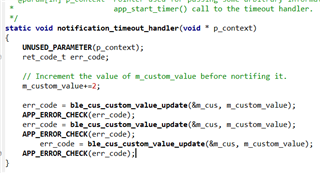Hello,
My project requires me to send acceleration data to phone. So, i have started with Custom BLE app.
Since i need to send 3 values, of x, y and z-axis. So i need to send multiple values to same characteristic. Can you guide me regarding this?
If any other approach serves me better, kindly do suggest me.




